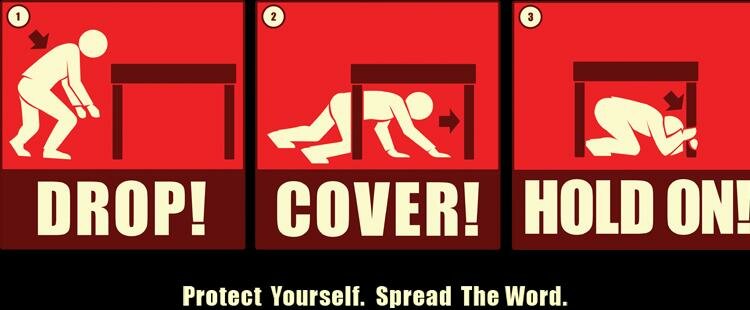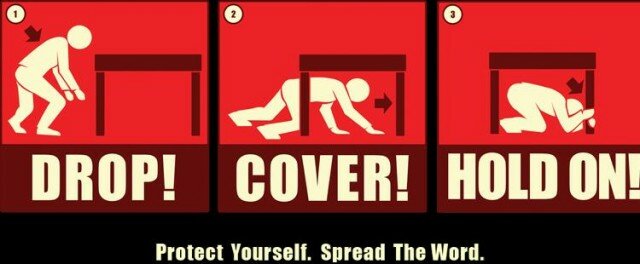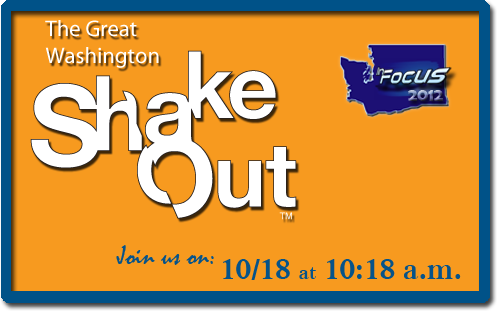In Part 3 of this series (Parts 1 and 2), The SunBreak’s Northwest Earthquake Correspondent Arne Christensen asks John Schelling (@jdschelling) of the Washington Emergency Management Division about the earthquake preparation details we haven’t thought about.
Arne has also written a previous series on earthquake preparedness in the tech sector, and the psychology of readiness. He also maintains this Nisqually Quake site, which collects stories on the subject.
Could you share some information about the contents of your preparedness kit(s), especially anything that most people wouldn’t think to have in their kit or anything especially useful for earthquakes?
I like to think I have a pretty well stocked emergency kit for our family, and we keep part of it near the garage door, which most people use when they enter or leave our house. When visiting for the first time, friends and family take notice of the week’s worth of stored water for 3-4 people and politely joke, “Looks like you’re ready for the big one,” and I look at them quizzically and say “Yep, aren’t you?”
This usually leads to a discussion about what one should have in a disaster preparedness kit along with some encouragement to not let the rest of the week go by without putting at least one thing into a bin as a start. Putting together an emergency kit is easy and can be done on a budget! In fact, I suspect that many people will have most of these items already. However, they may be consolidated into some type of container in case they have to leave quickly.
Essential items should include: a battery-powered or hand-crank NOAA weather radio, at least a 3-day supply of nonperishable food (I like the kind that can be served on paper plates or in paper bowls requiring no water for cleanup!), a first aid kit, at least a week’s worth of medications and any necessary medical supplies, sanitation items and a portable shovel since you might need to dig a hole outside (don’t laugh, this is how folks in New Zealand did it for awhile last year), copies of important documents in a waterproof container, emergency blankets, pet supplies, if applicable ( I have a huge black lab, so they’re applicable to me), and I already mentioned water (at least three days of water–one gallon per person or pet per day), and some spare cash since ATMs and point of sale might not work.
When my daughter was younger, my wife and I learned the hard way that we needed to keep more diapers as part of our kit since you never know when the power will be out, stores will be closed, and debris will block the roadway, limiting your options. And believe me, no one wants to be stuck with a baby that has no diapers! Since no parent wants to run short on diapers or baby formula, this would be a good time to make sure you’ve got enough set aside to last for at least a week. Fortunately, for us, the debris in this case was snow from last winter’s storm, but we learned our lesson. My wife also discovered the benefit of having an LED headlamp rather than a traditional flashlight, so you have both of your hands free.
Parents, get your kids involved and let them pick out some snacks and food for your emergency stash, since they’ll be the ones that have to eat it and you’ll be the one that has to hear them complain that they don’t want to eat what you picked! Now that our daughter is older, we have had to replace some of the baby food she ate with Dora the Explorer Spaghetti O’s and other canned food that she would be willing to eat if we can only cook with our camp stove or barbecue grill.
As for earthquake specific items, I would suggest face and dust masks for use during clean up and an emergency toilet (basically a 5-gallon bucket with a seat) and garbage bags to use as liners. The reality is that water and sewer lines can and will break–especially in areas that are subject to liquefaction. You’ll be much more comfortable with this arrangement than going outside–especially during the windy and rainy winters in the Pacific Northwest.
What do you think the Northwest should learn from other places, I suppose California and Japan in particular, about how to deal with earthquakes?
I think we have to shift the way in which we view both earthquake preparedness and recovery. Earthquake and tsunami safety shouldn’t be a standalone issue, but a component of everything we do in earthquake country. The Japan earthquake and tsunami was an important event for all of us. Japan spends significantly more than the U.S. on earthquake mitigation and their buildings, and infrastructure outside of the tsunami hazard zone fared remarkably well. However, when it came to the tsunami, they were planning for the most probable event, not the worst case possible event. This is why we saw water flowing over the top of their seawalls and penetrating their other defenses.
In Washington and throughout the Pacific Northwest we have not had the vast written history that a nation like Japan does, so our focus has been on looking at the geological record. What we find is that our subduction zone, Cascadia, has produced earthquakes and tsunamis regularly enough to know that it averages a M9+ earthquake every 500-600 years, but this is an average, which means that some earthquakes have occurred only a few hundred years apart and others much longer.
When the next one will happen is anyone’s best guess, so we need to be vigilant and ready. This means looking at the concept of resilience in terms of our systems, infrastructure, and buildings. The reality is that if we do not make seismic safety investments in these aspects of our communities during peacetime, people, property, the environment, and our economy will suffer the effects afterwards. The Washington State Seismic Safety Committee has been examining these issues and is working on a project entitled “The Resilient Washington State Initiative” to get a better snapshot of where we are today and what we can do to buy down tomorrow’s recovery at today’s rates.


